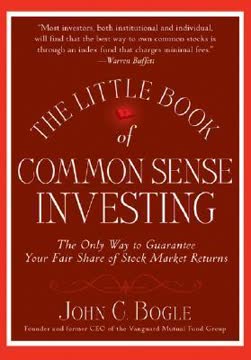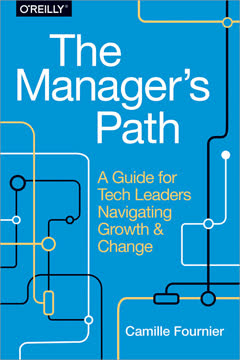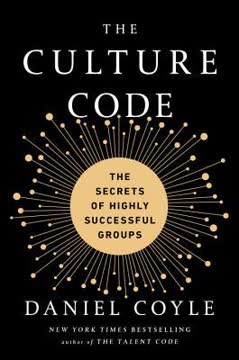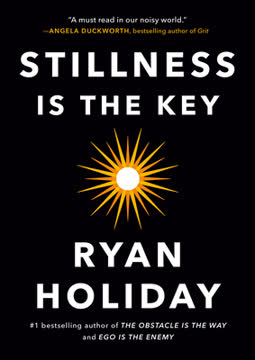Key Takeaways
1. Coaching is about enhancing performance and learning through dynamic interaction
Coaching aims to enhance the performance and learning ability of others.
Dynamic process. Coaching is not a one-way flow of instructions, but a collaborative effort between coach and coachee. It involves providing feedback, asking effective questions, and motivating individuals to reach their full potential. The goal is to help people help themselves, fostering self-reliance and continuous improvement.
Benefits both parties. Effective coaching not only enhances the coachee's performance but also benefits the coach. Coaches often report:
- Creating more time for themselves by developing their team's skills
- Enjoying work more due to improved relationships
- Achieving better results as a team
- Building stronger interpersonal skills that apply beyond the workplace
2. Asking questions is more powerful than telling in coaching conversations
The pivotal question is often more powerful than the instruction, as Socrates knew.
Socratic method. By asking thoughtful questions instead of providing direct answers, coaches encourage coachees to think critically and develop their own solutions. This approach leads to deeper understanding and ownership of the learning process.
Types of questions:
- Open-ended questions that encourage exploration
- Probing questions that delve deeper into issues
- Reflective questions that promote self-awareness
- Hypothetical questions that stimulate creative thinking
Active listening. Coaches should practice active listening, paying attention to both verbal and non-verbal cues. This helps in formulating relevant follow-up questions and demonstrates genuine interest in the coachee's perspective.
3. Effective feedback is specific, timely, and focuses on observable behaviors
Coaches don't focus exclusively on the coachee. In fact, great coaches have a high degree of self awareness.
AID framework. When providing feedback, use the AID approach:
- Actions: Describe specific, observable behaviors
- Impact: Explain the effect of these actions
- Desired outcome: Discuss ways to improve or maintain performance
Timeliness. Deliver feedback as soon as possible after the observed behavior to ensure relevance and maximize learning opportunities.
Balance. Provide a mix of positive reinforcement and constructive criticism. Start with positive observations to create a receptive atmosphere before addressing areas for improvement.
4. The GROW model provides a structured approach to coaching sessions
A glance at the contents page and the glossary of this book will show you in more detail the tool kit of the great coach.
GROW framework. This model structures coaching conversations into four key stages:
- Goal: Establish clear objectives for the session
- Reality: Explore the current situation and challenges
- Options: Brainstorm possible solutions and strategies
- Wrap-up: Agree on specific actions and next steps
Flexibility. While providing structure, the GROW model allows for flexibility in the time spent on each stage, depending on the coachee's needs and the specific situation.
Accountability. The wrap-up stage is crucial for ensuring follow-through. Coaches should help coachees set specific, measurable action steps and establish a timeline for implementation.
5. Understanding different personality types improves coaching effectiveness
Managers and staff who fail to receive feedback (for whatever reason) disable an important self correcting mechanism and aid to personal productivity.
Myers-Briggs Type Indicator. Familiarize yourself with personality assessment tools like MBTI to better understand individual preferences and communication styles. This knowledge helps tailor coaching approaches to each coachee's needs.
Key MBTI dimensions:
- Extraversion vs. Introversion
- Sensing vs. Intuition
- Thinking vs. Feeling
- Judging vs. Perceiving
Adaptability. Recognize that different personality types may require different coaching styles. For example, introverts might prefer written communication or one-on-one sessions, while extroverts may thrive in group settings.
6. Adapt your coaching style based on the coachee's skill and will
To help you do this, use the Skill/Will matrix.
Skill/Will matrix. This tool helps coaches determine the appropriate leadership style based on the coachee's competence (skill) and motivation (will) for a specific task:
- High skill, high will: Delegate
- High skill, low will: Excite
- Low skill, high will: Guide
- Low skill, low will: Direct
Dynamic approach. Regularly reassess the coachee's skill and will levels, as they may change over time. Adjust your coaching style accordingly to ensure continued growth and development.
Building competence. For low-skill situations, focus on providing clear instructions, demonstrations, and opportunities for practice. Gradually reduce support as the coachee's competence increases.
7. Motivation is key: help coachees visualize success and build confidence
Good coaches habitually make explicit with the coachee the context for their forthcoming interactions.
Visualization. Help coachees create a vivid mental image of their desired outcome. This enhances motivation and provides a clear target to work towards.
Confidence cycle. Foster a positive cycle of confidence by:
- Helping coachees understand their current level of motivation
- Assisting them in creating a compelling vision of success
- Providing ongoing support, praise, and coaching
Personalized motivation. Recognize that different individuals are motivated by different factors. Use tools like motivation assessments to identify what drives each coachee and tailor your approach accordingly.
8. Cultural awareness is crucial when coaching across diverse backgrounds
Cultural differences do not arise only from national, racial or religious origins – e.g., people new to your organisation may still be heavily influenced by the culture of their previous employer.
Cultural dimensions. Be aware of cultural differences in areas such as:
- Communication styles (direct vs. indirect)
- Power distance (hierarchical vs. egalitarian)
- Individualism vs. collectivism
- Time orientation (short-term vs. long-term focus)
Adaptability. Adjust your coaching style to accommodate cultural norms while maintaining the core principles of effective coaching. This may involve modifying your communication style, feedback approach, or goal-setting process.
Open dialogue. Encourage open discussions about cultural differences and their potential impact on the coaching relationship. This fosters mutual understanding and respect.
9. Team coaching requires establishing clear goals and fostering collaboration
The whole team participates in drafting work plan.
Team charter. Facilitate the creation of a team charter that outlines:
- Shared purpose and goals
- Individual roles and responsibilities
- Communication norms and expectations
- Decision-making processes
Regular check-ins. Schedule periodic team coaching sessions to assess progress, address challenges, and reinforce collaborative behaviors.
Cross-functional skills. Encourage team members to develop complementary skills and share knowledge, fostering a more versatile and resilient team.
10. Mentoring goes beyond coaching to provide long-term career guidance
Mentoring and coaching are very similar activities. The only real difference is that the coach focuses on building the coachee's ability to accomplish specific tasks, whereas the mentor has a wider perspective.
Holistic approach. Mentoring encompasses a broader range of support, including:
- Career guidance and long-term planning
- Sharing industry insights and organizational knowledge
- Providing networking opportunities
- Offering personal and professional advice
Trust-building. Establish a strong foundation of trust by maintaining confidentiality, showing genuine interest in the mentee's development, and sharing your own experiences and challenges.
Balancing support and challenge. Effective mentors provide both emotional support and constructive challenge, helping mentees grow beyond their comfort zones while feeling supported in their journey.
Last updated:
FAQ
What is "The Tao of Coaching" by Max Landsberg about?
- Practical guide to coaching: The book is a concise, practical toolkit for managers and leaders who want to boost their effectiveness by inspiring and developing those around them.
- Focus on workplace coaching: It centers on coaching in a professional context, but its principles are applicable to personal life and relationships as well.
- Story-driven learning: The book uses the fictional story of Alex, a manager, to illustrate coaching techniques and challenges in real-life scenarios.
- Emphasis on simplicity: Landsberg argues that mastering a few key coaching techniques, practiced consistently, is more effective than learning a vast array of complex methods.
Why should I read "The Tao of Coaching" by Max Landsberg?
- Improve leadership skills: The book provides actionable advice for becoming a more effective leader by developing others.
- Time-saving benefits: Coaching others well can free up your own time by enabling better delegation and team performance.
- Broad applicability: Techniques are relevant not just for managers, but also for parents, mentors, and anyone interested in personal development.
- Proven success: The book has sold over 200,000 copies, is available in 14 languages, and is based on over 30 years of the author’s coaching experience.
What are the key takeaways from "The Tao of Coaching"?
- Coaching is mutually beneficial: Effective coaching helps others grow while also making the coach more effective and freeing up their time.
- Ask, don’t just tell: Powerful coaching relies on asking the right questions rather than simply giving instructions.
- Feedback is essential: Constructive, actionable feedback is a cornerstone of development, but it must be delivered skillfully.
- Use structured frameworks: Models like GROW (Goal, Reality, Options, Wrap up) provide a clear structure for coaching sessions.
What is Max Landsberg’s definition of coaching in "The Tao of Coaching"?
- Enhancing performance and learning: Coaching aims to improve both the performance and learning ability of others.
- More than feedback: While feedback is important, coaching also involves motivation, questioning, and adapting to the coachee’s readiness.
- Dynamic interaction: Coaching is a two-way, interactive process, not a one-way flow of instructions.
- Self-sufficiency goal: The ultimate aim is for the coachee to help themselves, building independence and confidence.
What is the GROW model in "The Tao of Coaching" and how is it used?
- Four-step structure: GROW stands for Goal, Reality, Options, Wrap up, providing a simple framework for coaching conversations.
- Goal: Define the specific objective or topic for the session.
- Reality: Explore the current situation, inviting self-assessment and sharing examples.
- Options and Wrap up: Brainstorm possible actions, then commit to specific next steps and support needed.
How does "The Tao of Coaching" by Max Landsberg recommend giving and receiving feedback?
- Use the AID model: Feedback should address Actions, their Impact, and the Desired outcome for improvement.
- Focus on behaviors: Discuss specific, observable actions rather than personal traits or character.
- Make it constructive: Feedback should clarify what was done well and what could be improved, avoiding blame or judgment.
- Ask for feedback: Coachees should actively seek feedback and listen openly, making it easier for coaches to provide it.
What are the most common myths about coaching according to "The Tao of Coaching"?
- Coaching is only altruistic: In reality, coaching benefits the coach as much as the coachee, including saving time and building better teams.
- Coaching equals feedback: Effective coaching involves more than just giving feedback; it includes questioning, motivation, and structured approaches.
- Coaching takes too much time: Small, regular doses of coaching are often more effective than infrequent, lengthy sessions.
- Coaching is only for work: The skills and benefits of coaching extend to personal life, family, and friendships.
How does "The Tao of Coaching" address different individual styles and the Skill/Will matrix?
- Recognize individual differences: Tools like the Myers-Briggs Type Indicator help understand team members’ preferred working styles.
- Skill/Will matrix: Tailor your coaching style based on the coachee’s skill and will for a specific task—Delegate, Guide, Excite, or Direct.
- Dynamic adaptation: Adjust your approach as the coachee’s skill and motivation evolve over time.
- Open discussion: Encourage open conversations about style differences to improve collaboration and reduce misunderstandings.
What are the main coaching blocks and how does "The Tao of Coaching" suggest overcoming them?
- Common blocks: Not enough time, belief the coachee won’t respond, thinking the task won’t suffer, or fear of hurting feelings.
- Underlying causes: Often rooted in a need for control, fear of failure, or discomfort with confrontation.
- Overcoming blocks: Plan coaching sessions, ask coachees how they prefer feedback, start with safe relationships, and reassess your leadership mindset.
- Self-awareness: Great coaches are aware of their own psychological blocks and work to overcome them.
How does "The Tao of Coaching" by Max Landsberg recommend motivating others?
- Understand motivation cycles: Identify whether someone is in a positive or negative cycle of motivation and confidence.
- Build confidence: Help coachees envision success and recognize their potential, especially when confidence is low.
- Use praise and support: Offer genuine praise and ongoing support to reinforce positive behaviors and achievements.
- Tailor motivation: Recognize that different people are motivated by different factors; use tools like the motivation exercise in the appendices.
What are the best quotes from "The Tao of Coaching" by Max Landsberg and what do they mean?
- “If you invest just ten minutes in coaching someone who reports to you, it will later save you an hour.” — Emphasizes the time-saving power of effective coaching.
- “The meeting of two individuals is like the contact of two chemical substances: if there is a reaction, both are transformed.” (C.G. Jung) — Highlights the transformative potential of coaching relationships.
- “Coaching aims to enhance the performance and learning ability of others.” — The book’s core definition of coaching.
- “Ask questions – don’t just tell – when helping others to develop their skills.” — Underscores the importance of inquiry over instruction in coaching.
What are the 20 Golden Rules of Coaching in "The Tao of Coaching" by Max Landsberg?
- Leadership requires a following: You can’t be a leader without followers.
- Ask, don’t just tell: Use questions to develop others.
- Listen for feedback: Receiving feedback requires active listening.
- Coaching benefits the coach: Both parties gain from coaching.
- Guide, don’t judge: Focus on helping, not evaluating.
- Structure sessions: Organize coaching for best results.
- Embrace style differences: Great teams overcome different working styles.
- Overcome coaching blocks: Address your own barriers to coaching.
- Use instant coaching: Quick, focused coaching can be effective.
- Diagnose will and skill: Tailor your approach to the coachee’s readiness.
- Build trust with reluctance: Trust is key with hesitant coachees.
- Be visible to motivate: You can’t motivate if you’re absent.
- Anticipate cultural differences: Adjust for cultural context.
- Start teams well: Set up teams for success from the beginning.
- Use reframing questions: Powerful questions can shift perspectives.
- Focus on facts: Coaches work with observable behaviors.
- Give upward feedback: Providing feedback to superiors is valuable.
- Master goal-setting: Be skilled in setting and communicating goals.
- Mentor and be mentored: Both roles are important for growth.
- Your impact is lasting: Coaching effects can be more powerful than you imagine.
Review Summary
The Tao of Coaching receives mixed reviews, with an average rating of 3.76 out of 5. Many readers appreciate its concise, practical approach to coaching, offering useful tools and techniques through a story-based format. The book is praised for its accessibility and applicability in professional settings. However, some critics find the writing style grating and the fictional narrative elements contrived. Despite these criticisms, many readers recommend it as a valuable resource for managers, leaders, and those interested in improving their coaching skills.
Similar Books









Download PDF
Download EPUB
.epub digital book format is ideal for reading ebooks on phones, tablets, and e-readers.




